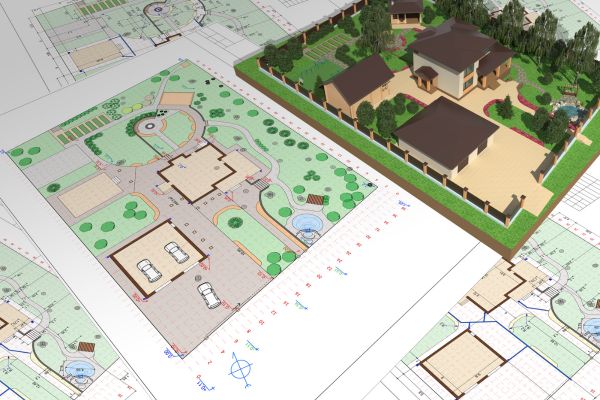According to Article 212 of the Land Law 2024, what type of land is the land for communal houses, temples in Vietnam?
According to Article 212 of the Land Law 2024, what type of land is the land for communal houses, temples in Vietnam?
According to Article 212 of the Land Law 2024:
Belief land
1. Belief land is land with religious buildings including communal houses, temples, shrines, altars, family worship houses; pagodas not subject to the provisions of Clause 1, Article 213 of this Law; and other religious buildings.
2. The use of Belief land must be for the right purpose, in accordance with the land use planning, construction planning approved by the competent authority.
3. The use of Belief land in combination with commerce and services must ensure the requirements stipulated in Clause 2, Article 218 of this Law.
Thus, according to Article 212 of the Land Law 2024, land with buildings such as communal houses and temples is classified as Belief land.

According to Article 212 of the Land Law 2024, what type of land is the land for communal houses, temples in Vietnam? (Internet image)
What are requirements for use of the belief land for both its main purpose and commercial purposes in Vietnam?
According to Clause 3 of Article 212 of the Land Law 2024:
Belief land
...
3. The use of Belief land in combination with commerce and services must ensure the requirements stipulated in Clause 2, Article 218 of this Law.
Additionally, According to Clause 2 of Article 218 of the Land Law 2024:
Use of mixed-use land
...
2. The Use of mixed-use land must meet the following requirements:
a) Not changing the land type according to land classification stipulated in Clauses 2 and 3, Article 9 and specified in the types of documents stipulated in Article 10 of this Law;
b) Not losing the necessary conditions to revert to the primary purpose of land use;
c) Not affecting national defense and security;
d) Minimizing the impact on the conservation of natural ecosystems, biodiversity, and environmental landscapes;
dd) Not affecting the use of adjoining parcels of land;
e) Fulfilling all financial obligations as prescribed;
g) Complying with relevant legal regulations.
The use of Belief land in combination with commerce and services must meet the following requirements:
- Not changing the land type according to land classification stipulated in Clauses 2 and 3, Article 9 of the Land Law 2024 and specified in the types of documents stipulated in Article 10 of the Land Law 2024
- Not losing the necessary conditions to revert to the primary purpose of land use;
- Not affecting national defense and security;
- Minimizing the impact on the conservation of natural ecosystems, biodiversity, and environmental landscapes;
- Not affecting the use of adjoining parcels of land;
- Fulfilling all financial obligations as prescribed;
- Complying with relevant legal regulations.
What category does belief land fall into?
According to Article 9 of the Land Law 2024:
Land Classification
1. According to the usage purpose, the land is classified into agricultural land, non-agricultural land, and unused land.
2. Agricultural land includes the following types:
a) Land for annual crops, including rice cultivation land and land for other annual crops;
b) Land for perennial crops;
c) Forestry land, including special-use forest land, protection forest land, and production forest land;
d) Land for aquaculture;
dd) Land for concentrated livestock breeding;
e) Land for salt production;
g) Other agricultural land.
3. Non-agricultural land includes the following types:
a) Residential land, including homestead land in rural areas and residential land in urban areas;
b) Land for building agency headquarters;
c) Land used for national defense and security purposes (hereinafter referred to as defense and security land);
d) Land for constructing public service works, including land for cultural, social, health, education and training, sports, science and technology, environment, meteorological and hydrological purposes, diplomatic missions, and other public service works; or land for building the headquarters of other public service providers;
dd) Land for non-agricultural production and business, including industrial zone land, industrial cluster land; commercial land; non-agricultural production establishment land; land used for mineral activities;
e) Land used for public purposes, including land for traffic works; land for irrigation works; land for water supply and drainage works; land for disaster prevention works; land with historical-cultural relics, scenic spots, and natural heritage; land for waste treatment works; land for energy works, public lighting; land for postal and telecommunications infrastructure, information technology; land for community markets and wholesale markets; land for public recreational and leisure spaces;
g) Land used for religious activities (hereinafter referred to as Belief land); land used for religious activities (hereinafter referred to as Belief land);
h) Cemetery land, funeral home land, cremation facility land; land for storing ashes;
i) Land with specialized water surfaces;
k) Other non-agricultural land.
4. Unused land is land not yet determined for use and not yet allocated or leased.
5. The Government of Vietnam regulates in detail the types of land in this Article.
According to the above provisions, Belief land falls into the non-agricultural land category.
LawNet